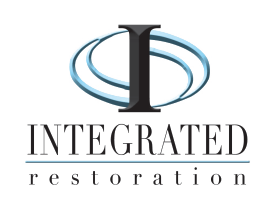Smoke & Soot Damage: Why Cleanup Is Trickier Than It Looks
After a fire, many property owners in Cleveland and Northeast Ohio focus on repairing what they can see — scorched walls, damaged roofing, or charred belongings. But often, the most serious damage is invisible. Smoke and soot can travel far beyond the flames, seeping into walls, ceilings, HVAC systems, and furniture.
At Integrated Restoration, we help homeowners and businesses uncover and safely remove this hidden damage. Whether it’s a kitchen fire in your home or a warehouse blaze that halts production, smoke and soot cleanup requires specialized tools, techniques, and training. Here’s why this type of damage is more complex than it looks — and why professional restoration makes all the difference.
The Lingering Effects of Smoke Damage
Smoke particles are incredibly fine — smaller than dust — which allows them to spread quickly throughout a building. Even if a fire was contained to one room, smoke can reach every corner of your property, embedding deep into drywall, insulation, and fabrics.
That’s why homes and offices may continue to smell smoky weeks later. Without professional-grade cleaning and deodorization, odors and contaminants remain trapped, creating poor indoor air quality and potential health concerns.
What to know: Regular cleaning products can’t remove these particles. Integrated uses HEPA filtration, air scrubbers, and ozone treatments to neutralize smoke odors safely and completely. Learn more here.
Why Soot Is So Damaging
Soot is one of the most corrosive byproducts of a fire. It’s made up of carbon, acids, and chemicals that can etch metals, stain walls, and even damage electronics. Soot also clings to surfaces easily — and once it settles, improper cleaning can make the problem worse.
What to know: Dry wiping or scrubbing soot without the right products can grind it deeper into materials. Our fire damage restoration specialists use targeted cleaning agents to safely remove soot from surfaces, appliances, and HVAC systems.
Water and Mold Risks After the Fire
When firefighters extinguish a blaze, the water used to save the structure often leaves behind another issue: moisture. Damp insulation, ceilings, or floors can lead to mold growth within days — especially in older Cleveland homes or multi-unit buildings.
What to know: Water damage restoration is a critical part of any post-fire cleanup. Integrated monitors moisture levels and uses professional dehumidifiers to prevent future mold problems.
Commercial Smoke & Soot Damage
For businesses, smoke and soot contamination can disrupt operations and impact equipment. Office HVAC systems can circulate odor and soot particles throughout the building, while manufacturing or warehouse facilities risk damage to tools, products, and sensitive electronics.
Integrated’s commercial fire restoration team works around the clock to help business owners recover quickly. From smoke removal and air purification to documentation for insurance adjusters, we help get your team back to work safely and efficiently.
Why Professional Fire Restoration Matters
DIY cleanup might seem tempting, but smoke and soot restoration requires industry-grade equipment and safety protocols. Professionals not only remove visible damage but also address hidden contamination that can cause ongoing health and structural issues.
At Integrated, our trained technicians use advanced tools — including thermal foggers, HEPA air scrubbers, and moisture meters — to detect and eliminate damage at its source. Our full-service approach means we clean, repair, and rebuild, so your home or business is fully restored.
How Smoke & Soot Cleanup Works
Cleaning up after a fire isn’t just about wiping down surfaces. True smoke and soot remediation is a multi-step process that removes contamination safely and prevents long-term damage. At Integrated Restoration, our technicians follow a proven method that goes far beyond standard cleaning:
1. Inspection and Testing
We begin by inspecting all affected areas — even those far from the fire source — and test surfaces for smoke and soot residue. This step helps us determine the right cleaning approach for each material type.
2. Containment and Air Filtration
To keep soot particles from spreading, we isolate the affected area using containment barriers. Industrial-grade HEPA air scrubbers filter airborne particles and improve indoor air quality during cleanup.
3. Surface Cleaning and Deodorization
Our team uses specialized vacuums and cleaning agents designed to break down soot without damaging walls, ceilings, or fixtures. Thermal fogging or ozone treatments are used to neutralize lingering odors at a molecular level.
4. HVAC and Hidden Area Treatment
Smoke often travels through vents and ductwork. We clean and disinfect HVAC systems to prevent future odor circulation, then address hidden cavities like attics, basements, and behind-wall spaces.
5. Final Repairs and Restoration
Once cleanup is complete, we handle necessary structural repairs — from drywall replacement to repainting — restoring the space to pre-loss condition.
Every step requires precision, safety equipment, and professional-grade products. That’s why smoke and soot cleanup is best left to trained restoration specialists rather than DIY fixes.

